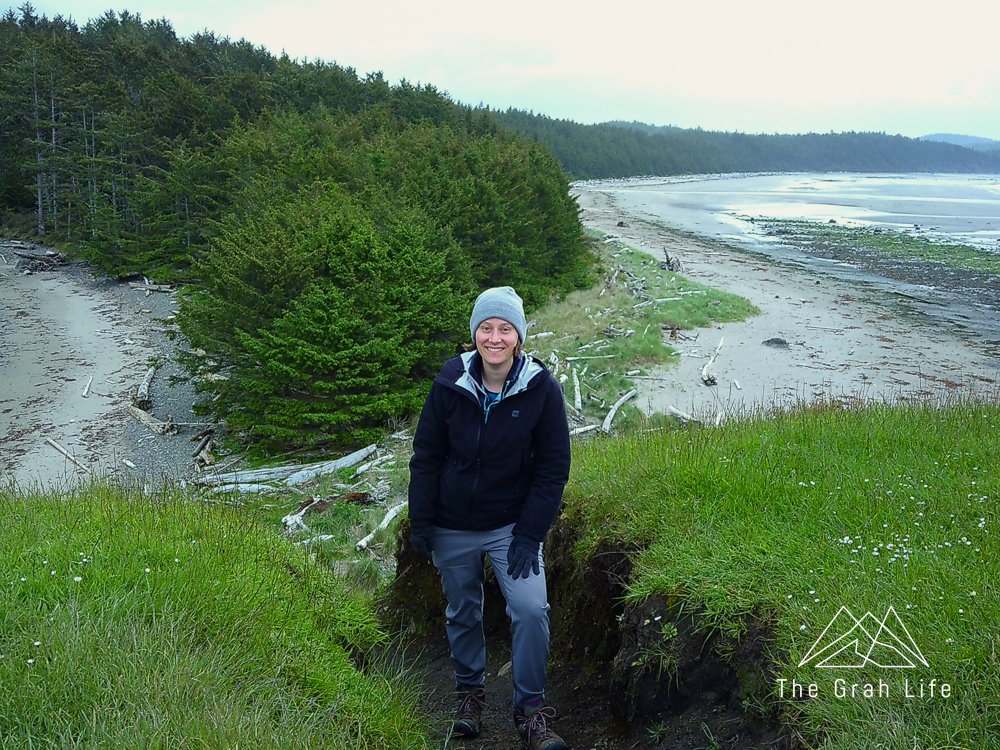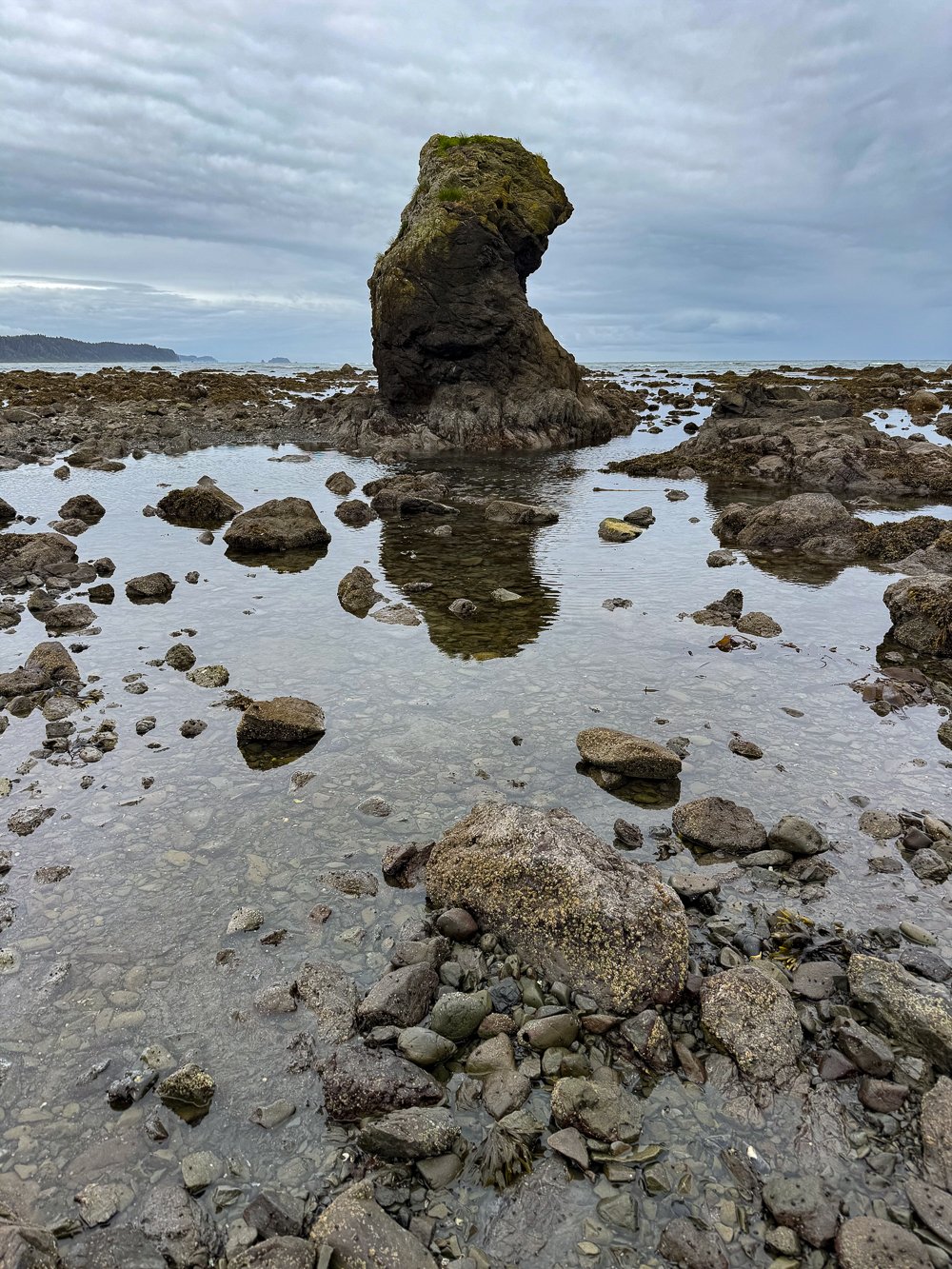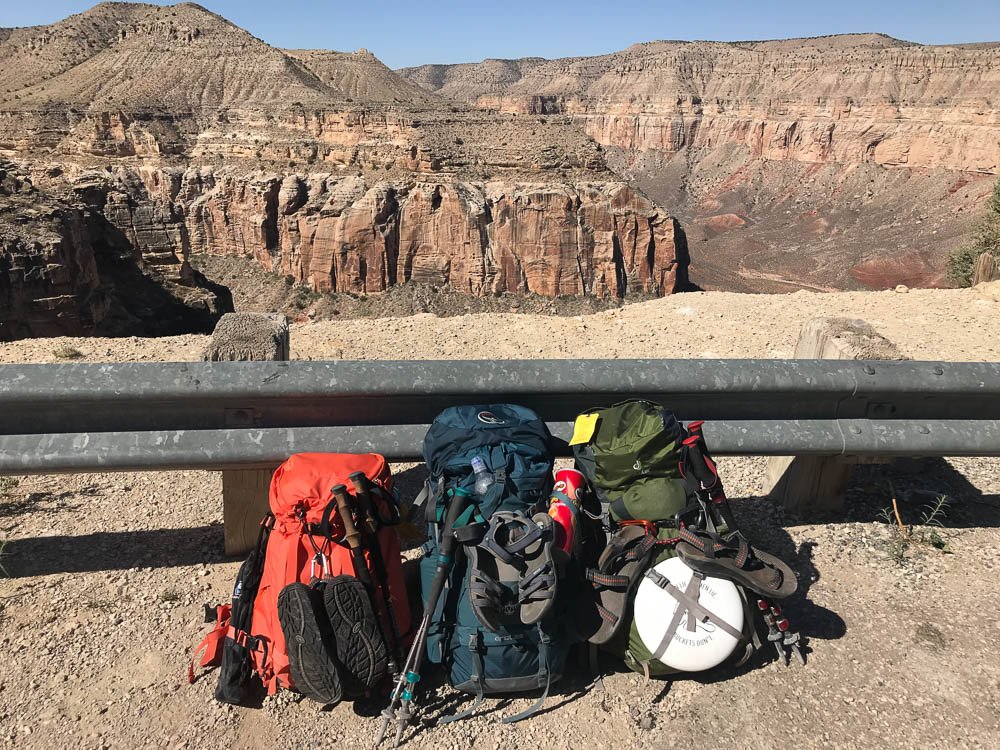How to Backpack the Ozette Triangle
We finally backpacked the Ozette Triangle, in the Olympic National Park and it lives up to the hype. It’s short and easy, incredibly beautiful, and has so much to do around camp. Since this trail is a loop, you’ll have the option to trek the whole 9.5 miles or make your hike a shorter out and back — we’ll go into the pros and cons of each below.
Trail overview
The trail begins as you walk over a bridge at Lake Ozette — Washington’s largest unaltered natural lake. Be quiet here – if you’re lucky, you’ll spot otters in the river below.
Walking further, you’ll be surrounded by the rainforest for three miles. Soon after you start your hike in the forest, you’ll come to a fork in the trail. Head left to go to Sand Point or right to Cape Alava.
The rainforest here is so lush that it’s said to have carnivorous pitcher plants, sundew, and even cranberry bogs. Most of the trail is board walked, and while it’s beautiful, old boards are slowly being replaced and can be slippery when wet. Watch your step!
Once you reach your destination, find a campsite, go tide pooling, or hike to Wedding Rocks to see petroglyphs (more on these below)!
Trail description: Washington Trails/Alltrails
Distance: 9.5 miles
Elevation gain: 100 feet
Dogs allowed on a leash: No
Permits: Required year-round from recreation.gov under the North Coast section
Water source: There are seasonal streams located near Sand Point and Cape Alava. Check recent trip reports for the status of streams after June or plan to pack in all the water you’ll need for your trip.
Fresh water must be treated by filtering or boiling along the coast here. Cryptosporidium and giardia have been found in coastal water sources, and using iodine tablets is not enough here. The water here is tinted from leached tannin leaves, and the color will not go away after filtering.
Wish Creek — the water source at Sand Point
Campfire information: Campfires are only allowed at Cape Alava on the beach, below the high tide line and at least ten feet from drift logs, as long as there isn’t a fire ban. Only use driftwood* for fuel, not wood from the forest, as it’s part of the ecosystem.
*Cape Alava has little to no driftwood during the summer season.
Toilets: You’ll find pit toilets near the Sand Point and Cape Alava campgrounds, but none at Wedding Rocks. There you will have to bury your waste 6-8 inches deep, 200 feet from campsites and water sources, and pack out your toilet paper.
These are the best backpacking toilets we’ve seen yet, but don’t expect much — we have low standards.
Bear canisters: Required
Best season
May to September
Although you can camp here year-round, late spring to early fall is the best time to visit. Even in the height of summer you should be prepared for wind, rain, sun, and fog. The weather here changes quickly, so pack plenty of warm layers (find a packing list here).
How long should your trip be?
You’ll need permits for every night of your stay, whether you camp in one place or move each day. At a minimum, plan on staying one night, but if you’d like to camp in multiple places, we’d suggest backpacking two or more nights.
Although it is the less popular option, we prefer to set up one campsite for the duration of our stay, then day hike from there. This allows you to explore as much as you like without carrying the weight of your campsite around. It also ensures you find and keep a great campsite during your stay.
Campsite at Sand Point
Pro tip: hang a buoy at your campsite so you can easily find it from the beach
What sites should you get permits for?
Sand Point
Sand Point is a great spot to do an overnight. It’s also a great place to start or end a multi-day trip. It’s three miles from Ozette Lake and four miles to Cape Alava, with Wedding Rocks at the halfway point.
There are plenty of spacious campsites here, and if the tide is low enough, you can camp on the beach after passing Wish Creek. Plan your trip with low tide in mind, and you’ll have hours of entertainment tide pooling. There is also a small hill you can climb to see a great view of the beach.
Large group campsite at Sand Point
Photo taken with Zach’s toy camera at the top of the hill at Sand Point
There were tons of crabs in the tide pools
Wedding Rocks
The Wedding Rocks are located at the halfway point between Sand Point and Cape Alava. Since there is no water source, if you choose to camp here, you’ll need to pack in all the water you’ll need.
Reaching Wedding Rocks is a chore — the beach here gives away at every step, and there are very steep overland trails along the way where there are tide traps. Time your hike with low tide for the easiest route.
You’ll find a limited number of campsites to the north and south of the petroglyphs site (more on the petroglyphs below).
Cape Alava
The hike to Cape Alava has more elevation gain and loss than the hike to Sand Point. If you plan on trekking the entire loop, consider heading here first to complete the hardest section first. Just like Sand Point, you’ll find plenty of campsites and pit toilets.
Tskawahyah Island is just off the coast. If the tide is low enough you can walk near it, but it’s sacred to the Makah tribe, so do not climb on it. Nearby, you’ll find an old ranger station and a small memorial that was the site of an archeological dig in the 1980s.
Tide traps
There are two tide traps between Sand Point and Cape Alava. Save a tide chart before leaving for your trip and watch for the markers showing where overland trails are from the beach.
Overland trail marker
Petroglyphs at Wedding Rocks
Wedding Rocks is known for its petroglyphs made by the Makah people. 200-500 years ago, the “great slide” happened, and they slid into the ocean. Nowadays, you can find the petroglyph remains scattered throughout the beach at low tide. They are under legal protection and are culturally significant to the Tribe. Please respect them during your visit.
The petroglyphs show whales, hunters, ships, and faces. The two whales shown below were the easiest to find. They are located near an overland trail, facing south. Finding other petroglyphs throughout the beach is like a treasure hunt. Our best find was just north of the whale petroglyph, located amongst the large rocks near the hillside.
Wedding Rocks is a tidal obstacle — you’ll only be able to walk on the beach here if the tide is at five feet or lower.
Wildlife
The Ozette Triangle is a remote stretch of wilderness in the Olympic National Park and is known for having a fantastic array of wildlife. During our trip there we saw otters, eagles, various birds, squirrels, and tide pool creatures.
Bears are known to frequent this area, so read up on bear safety here. If you’re lucky, you may also be able to see sea lions or whales.
Leave no trace principles
Like all wildness spaces, you’ll need to follow the leave no trace principles during your visit. This includes using a bear canister, staying on trails, and packing out all your trash.
Bonus points if you bring a trash bag and carry out trash you find on the beach. We saw so many plastic bottles on the southern beach by Sand Point.
Search the blog for more adventures! Try searching for topics such as “hiking”, “waterfalls”, or “Arizona”.































